Shenzhou 11
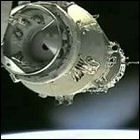 China’s Shenzhou 11 mission is launched, the country’s sixth crewed flight, with a two-man crew consisting of Jing Haipeng (veteran of the Shenzhou 7 and Shenzhou 9 missions) and rookie taikonaut Chen Dong. The vehicle’s destination is the recently-launched Tiangong-2 space station, where it berths for nearly a month, giving the crew more room to perform experiments and Earth observations. Shenzhou 11 returns to Earth in November after a full month in orbit.
China’s Shenzhou 11 mission is launched, the country’s sixth crewed flight, with a two-man crew consisting of Jing Haipeng (veteran of the Shenzhou 7 and Shenzhou 9 missions) and rookie taikonaut Chen Dong. The vehicle’s destination is the recently-launched Tiangong-2 space station, where it berths for nearly a month, giving the crew more room to perform experiments and Earth observations. Shenzhou 11 returns to Earth in November after a full month in orbit.
Shenzhou 10
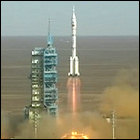 The Chinese manned space mission Shenzhou 10 lifts off, carrying taikonauts Nie Haisheng, Zhang Xiaoguang and Wang Yaping to the orbiting Tiangong-1 space laboratory module for a stay of over two weeks. This is the fifth manned flight in the history of the Chinese space program, and the second (and is expected to be the last) to visit Tiangong-1. A larger orbital station, Tiangong-2, is under development.
The Chinese manned space mission Shenzhou 10 lifts off, carrying taikonauts Nie Haisheng, Zhang Xiaoguang and Wang Yaping to the orbiting Tiangong-1 space laboratory module for a stay of over two weeks. This is the fifth manned flight in the history of the Chinese space program, and the second (and is expected to be the last) to visit Tiangong-1. A larger orbital station, Tiangong-2, is under development.
Shenzhou 9 docks at Tiangong-1
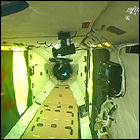 The three-person crew of Chinese space vehicle Shenzhou 9 successfully achieves an automated docking at Tiangong-1, China’s first space station. The crew spends a total of six days aboard the station, described by the Chinese government as an orbital laboratory, before undocking and then successfully attempt a manual docking maneuver. The nature of the crew’s work during its stay aboard Tiangong-1 is not revealed.
The three-person crew of Chinese space vehicle Shenzhou 9 successfully achieves an automated docking at Tiangong-1, China’s first space station. The crew spends a total of six days aboard the station, described by the Chinese government as an orbital laboratory, before undocking and then successfully attempt a manual docking maneuver. The nature of the crew’s work during its stay aboard Tiangong-1 is not revealed.
Shenzhou 9
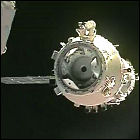 China launches its fourth manned space mission, Shenzhou 9, on the first manned flight to the small space station Tiangong-1. The crew consists of Jing Haipeng, Liu Wang, and the first female space traveler from China, Liu Yang. Automated docking at Tiangong-1 has been rehearsed by ground controllers during the unmanned Shenzhou 8 mission, but this mission requires both automatic and manual dockings to be carried out. The crew will spend a total of 13 days in space.
China launches its fourth manned space mission, Shenzhou 9, on the first manned flight to the small space station Tiangong-1. The crew consists of Jing Haipeng, Liu Wang, and the first female space traveler from China, Liu Yang. Automated docking at Tiangong-1 has been rehearsed by ground controllers during the unmanned Shenzhou 8 mission, but this mission requires both automatic and manual dockings to be carried out. The crew will spend a total of 13 days in space.
Shenzhou 7
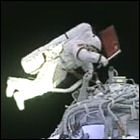 China launches its third crewed space mission, Shenzhou 7, into Earth orbit. For the first time, a full complement of three taikonauts is aboard (Zhai Zhigang, Liu Boming, and Jing Haipeng), and in another Chinese space first, Zhigang and Boming exit the spacecraft for a 22-minute spacewalk. Also during this flight, Shenzhou 7 passes within 30 miles of the International Space Station, posing no hazard but raising security concerns from the United States government. Because the customary solar panels of the Shenzhou spacecraft have not been installed to allow for the spacewalk (and unobstructed television coverage of the spacewalk), the mission lasts only three days.
China launches its third crewed space mission, Shenzhou 7, into Earth orbit. For the first time, a full complement of three taikonauts is aboard (Zhai Zhigang, Liu Boming, and Jing Haipeng), and in another Chinese space first, Zhigang and Boming exit the spacecraft for a 22-minute spacewalk. Also during this flight, Shenzhou 7 passes within 30 miles of the International Space Station, posing no hazard but raising security concerns from the United States government. Because the customary solar panels of the Shenzhou spacecraft have not been installed to allow for the spacewalk (and unobstructed television coverage of the spacewalk), the mission lasts only three days.
Shenzhou 6
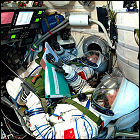 China returns to Earth orbit with the launch of Shenzhou 6, which, unlike China’s previous manned space shot in 2003, is broadcast on live TV. Taikonauts Fei Junlong and Nie Haisheng orbit Earth for five days. During this mission, the Shenzhou spacecraft displays a previously untested ability to change its orbit. According to some press accounts, the live broadcast of the launch – an unusual step for China’s space program – is accompanied by the sound of the original 1970s theme from Battlestar Galactica.
China returns to Earth orbit with the launch of Shenzhou 6, which, unlike China’s previous manned space shot in 2003, is broadcast on live TV. Taikonauts Fei Junlong and Nie Haisheng orbit Earth for five days. During this mission, the Shenzhou spacecraft displays a previously untested ability to change its orbit. According to some press accounts, the live broadcast of the launch – an unusual step for China’s space program – is accompanied by the sound of the original 1970s theme from Battlestar Galactica.
Shenzhou 5
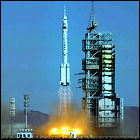 China becomes the third country to independently launch a crewed mission with the flight of Shenzhou 5, an orbital flight lasting almost 22 hours. Taikonaut Yang Liwei becomes the first Chinese citizen to leave Earth, though an American astronaut born in China had flown aboard space shuttle Challenger in 1985. Derived from Soviet-era Soyuz spacecraft, Shenzhou 5 comes in for a rough landing, causing Liwei some minor injuries upon impact.
China becomes the third country to independently launch a crewed mission with the flight of Shenzhou 5, an orbital flight lasting almost 22 hours. Taikonaut Yang Liwei becomes the first Chinese citizen to leave Earth, though an American astronaut born in China had flown aboard space shuttle Challenger in 1985. Derived from Soviet-era Soyuz spacecraft, Shenzhou 5 comes in for a rough landing, causing Liwei some minor injuries upon impact.